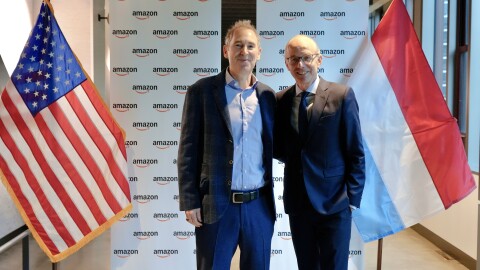We strongly disagree with the CNIL’s conclusions which are factually incorrect and we reserve the right to file an appeal. Warehouse management systems are industry standard and are necessary for ensuring the safety, quality, and efficiency of operations and to track the storage of inventory and processing of packages on time and in line with customer expectations.
Warehouse management systems are industry standard, and with good reasons
Like most logistics companies, Amazon uses a warehouse management system to plan and manage our operations in customer fulfilment, ensuring smooth processes that support our employees and help us deliver for customers. This is important, especially when you consider that our fulfilment centres manage tens of thousands items a day. These systems help us track the workflow of orders and optimise our operations. They help our teams determine the best way to organise shifts with the right number of employees to ensure a balanced workload and to deliver on our customer promises, in particular when there are peaks in volumes, including during the festive period.
Amazon uses technology to support employees, and better serve customers
How does that work? Once a customer places an order, our system checks for the closest fulfilment centre holding the item and what time it needs to be dispatched to be delivered on time. After calculating backwards from the delivery promise, the orders of all customers are then sorted and brought into a prioritised queue. There are various teams in our fulfilment centres; those who sort items as they arrive at the site, those who stow them ready for employees to pick items after a customer has clicked ‘buy’, employees who pack the items, and those responsible for shipping them. Employees benefit because we can balance team sizes so that the work is manageable for everyone and ensure a constant and balanced flow of goods.
Let’s imagine you live in Metz and order a product on Amazon.fr. In your case, our closest fulfilment centre is in Augny (Moselle), and if the product is in stock there, our system will most likely forward the order to our teams there. If we face a peak in orders at that moment, our systems will allow us to adapt the workload between the teams so we can continue to handle orders safely and efficiently. Since employees are trained in the various processes, this means that employees responsible for storing products or picking orders could, for example, help with the packing of customers’ orders, to cope with the peak of orders.
About the indicators discussed during the CNIL procedure, and the commitments we made
In the framework of the procedure, the French Data Protection Authority has inquired more specifically on the use of two indicators: the “Stow machine gun” and “Idle time”. As we did with the authority, we want to give clarity on their specific purpose to support our employees and eventually our customers. While we are confident our business model and practices comply with European and French applicable regulations, we have worked constructively with the CNIL throughout the procedure to address the questions they raised.
(i) We use an indicator for quality checking, internally referred to as “Stow machine gun”. We want each parcel to be properly inspected before being stored, to ensure that our customers receive the product they ordered in the condition that they expect. With that in mind, this indicator allows the team to notice if the items are stored too fast. It is important that employees take enough time to store the products so they can follow our safety guidelines, including adopting good postures when reaching or twisting. It is also important to ensure that enough time is allocated so each parcel is properly inspected before it is stored. To address the CNIL’s questions we will deprecate the Stow machine gun indicator.
(ii) As in any supply chain, we need to know when something has gone wrong. For that purpose, we notably use an indicator referred by the CNIL as “Idle time” which allows us to identify continued and abnormal failure (>10 minutes) in our supply chain and to address the situation. In practical terms, it allows our teams to spot problems which could put at risk our operations or, more importantly, safety, which is our number one priority. As part of the changes we proposed to the CNIL, we will extend the trigger threshold of the Idle time indicator from 10 minutes to 30 minutes.
***
We appreciate the great work our teams do and are committed to using technology to enrich the experience of our employees, supporting them in their roles and ensuring safety while helping us deliver for customers.
Want to know more about how our operations work? Click here.
Want to know more about what our employees say about our workplace? Click here.












